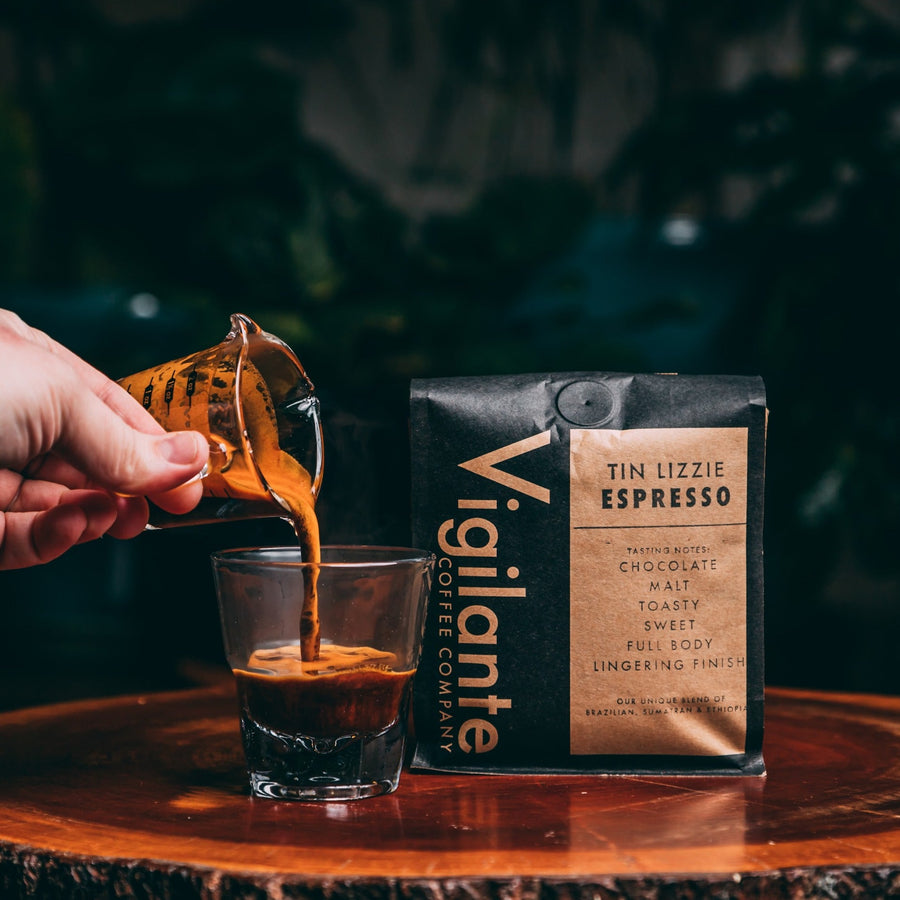Discovering the Abundant Flavors of Coffee Beans: a Deep Dive Into Coffee and Blended Coffee Beans
When you discover the abundant flavors of coffee beans, you uncover a complex world where each variety brings its very own personality to your cup. Recognizing the beginnings, processing approaches, and toasting methods can transform your coffee experience. As you browse via the art of espresso and the creativity behind combined coffees, you'll begin to appreciate the nuances that make each sip distinct. What you'll discover following may change the means you appreciate your morning brew.
The Origins of Coffee Beans: Checking Out Terroir and Flavor Profiles
When you take a sip of coffee, you're not simply delighting in a drink; you're experiencing a rich tapestry of flavors shaped by the beans' origins. Each region creates special taste accounts affected by elevation, environment, and soil. Beans from Ethiopia usually burst with intense, fruity notes, while those from Colombia tend to use a balanced, nutty sweet taste.
As you explore different beginnings, you'll notice exactly how terroir-- the ecological factors impacting a plant-- plays an essential function - Single Origin Espresso. The exact same coffee selection can taste considerably various depending on where it's grown
When you think about these factors, you begin to appreciate the intricacy behind your mug. Each sip informs a story of the land and the farmers who supported the beans. Next time you delight, think regarding the trip your coffee took before it reached your hands, and enjoy those intricate flavors that show its beginning.
Comprehending Espresso: The Art and Science Behind the Brew
When you think concerning coffee, it's not almost the strong flavor; it's also about the strategies that bring it to life. Recognizing just how various preparation methods impact preference can transform your brewing experience. Let's explore the complexities of espresso preparation and discover the distinct taste accounts that make each mug unique.
Espresso Preparation Strategies
Espresso preparation is both an art and a science, incorporating exact techniques with a deep understanding of coffee. To start, you'll intend to choose premium, freshly baked beans and grind them finely for ideal removal (Single Origin Espresso). The grind dimension is crucial; too crude, and your espresso will certainly be weak, as well fine, and it'll be bitter
The outcome needs to be a rich, luscious espresso with a lovely layer of crema on top. With practice, you'll grasp these techniques.
Flavor Accounts Explained
The globe of coffee provides an abundant tapestry of flavor profiles that can raise your coffee experience. When you take that first sip, you'll observe an equilibrium of resentment, sweet taste, and acidity. Each coffee bean lugs unique notes, from floral and fruity to nutty and chocolaty. Light roasts commonly display intense level of acidity and vibrant flavors, while dark roasts present deeper, bolder tones.
Recognizing these accounts aids you choose the right espresso for your taste buds. Trying out various blends can reveal surprising combinations. A well-crafted blend could integrate the intense notes of an Ethiopian bean with the abundant, chocolatey undertones of a Brazilian bean. Embrace the trip of discovering coffee's varied tastes, and you'll change your coffee routine right into an interesting experience.
Handling Techniques: Exactly How They Influence Flavor and Aroma
While it might appear that the beginning of coffee beans is the most substantial consider determining their flavor and aroma, the handling techniques used post-harvest play a just as crucial function. You'll find that these techniques can considerably alter the last taste account of your mug.
For instance, the washed procedure eliminates the fruit from the beans prior to fermentation, commonly resulting in a cleaner, brighter taste. The all-natural procedure leaves the fruit intact during drying, resulting in a sweeter, fruitier account.
Other methods, like honey handling, strike a balance, permitting some fruit mucilage to remain, providing an unique intricacy.
Each handling technique connects with the beans' inherent attributes, boosting or muting certain flavors and scents. So, when you drink that espresso or combined coffee, keep in mind that the journey from cherry to mug is influenced not simply by beginning however additionally by how those beans were my response refined.
Toasting Strategies: Unlocking the Full Prospective of Coffee Beans
Roasting techniques are necessary for disclosing the complete potential of coffee beans, as they transform raw, environment-friendly beans right into the aromatic, tasty coffee you take pleasure in. The selection of toasting method-- light, medium, or dark-- substantially influences flavor profiles. Light roasts protect the beans' all-natural acidity and fruity notes, while medium roasts balance sweetness and splendor. Dark roasts, on the various other hand, emphasize bold, great smoky flavors.
You can try out toasting temperature levels and times to find your excellent brew. A slower roast at reduced temperature levels permits complicated tastes to create, while a quicker roast can magnify anger. Pay attention to the fractures during roasting; the initial fracture suggests a light roast, while the second split signals a dark roast. By understanding these methods, you'll reveal a globe of taste, raising your coffee experience to new heights. Appreciate every sip, recognizing the care that entered into your mug!
The Magic of Blended Coffee: Producing Distinct Taste Experiences
Producing a distinct flavor experience with mixed coffee can transform your early morning ritual right into an exploration of preference. By combining various beans from different areas, you can expose a harmony of flavors that boost your cup to brand-new heights. Each mix offers a distinctive profile, stabilizing acidity, body, and sweet taste to produce something truly unique.
When you choose a blend, you're not simply choosing a coffee; you're picking a journey across varied landscapes and cultures. Exploring with various combinations enables you to uncover your personal faves, whether you enjoy fruity notes or rich, chocolatey touches.

Sampling Notes: Identifying the Nuances in Your Cup
As you drink your coffee, you might observe a range of flavors dancing on your taste buds, each disclosing the click to investigate intricacies of the beans. You may taste the brilliant acidity evocative citrus or the deep, rich notes similar to dark delicious chocolate. The sweet taste could evoke honey or sugar, balancing the overall account beautifully.
Take note of the body of the coffee-- does it feel light and airy, or is it full and velvety? The surface, as well, uses hints; a remaining aftertaste might mean nuttiness or flower undertones.

Don't forget to explore the unique characteristics of various beginnings, as each region passes on distinct flavors - Single Origin Espresso. For circumstances, Ethiopian coffees usually existing fruity notes, while Colombian beans may showcase an extra spherical sweetness. By recognizing these subtleties, you'll grow your gratitude for each mug, raising your coffee experience to new elevations

Developing Approaches: Maximizing Taste Extraction for Every Bean
When you discover the different brewing approaches, you'll find that each technique can considerably influence the taste profile of your coffee. From French press to pour-over, each approach essences various compounds, enhancing or silencing specific notes. Using a French press enables oils to continue to be in the brew, developing a richer taste, while pour-over emphasizes clearness and illumination.
Temperature and grind dimension likewise play essential duties. A coarser grind functions best for cold mixtures, while a fine work is perfect for coffee. Experimenting with water temperature level-- between 195 ° F and 205 ° F-- can disclose concealed flavors, also.
Don't forget soaking time; a quick removal can lead to sour notes, while over-extraction might generate bitterness. By readjusting these variables, you can make best use of taste extraction and truly raise your coffee experience. Enjoy the trip of discovering what approach best fits your taste!
Often Asked Questions
What Is the Suitable Water Temperature for Developing Coffee?
The perfect water temperature level for brewing coffee's in between 195 ° F and 205 ° F. If you utilize water that's also hot, you'll over-extract flavors; too chilly, and you will not remove sufficient. Objective for that wonderful spot for the ideal brew!
Just How Does Grind Dimension Impact Coffee Taste?
Work size considerably influences coffee flavor. Finer grinds extract extra flavors and oils, leading to a bolder taste, while coarser grinds yield a lighter flavor. Changing grind size helps you achieve your desired coffee profile.
Exist Wellness Benefits Associated With Drinking Coffee?

What Is the Difference Between Arabica and Robusta Beans?
Arabica beans are smoother and sweeter, often featuring fruity tastes, while robusta beans are stronger with a bitter preference and higher caffeine material. You'll discover these distinctions in scent and brewing experience.
Exactly How Can I Store Coffee Beans for Freshness?
To store coffee beans for quality, keep them in an airtight container, far from light, warmth, and wetness. You'll keep their flavor much longer if you only grind what you need right prior to developing.
Exploring the Abundant Tastes of Coffee Beans: a Deep Dive Into Coffee and Blended Coffee Beans.
When you check out the rich flavors of coffee beans, you reveal a complex globe where each range brings its own personality to your mug.When you take a sip of coffee, you're not just delighting in a drink; you're experiencing an abundant tapestry of tastes formed by the beans' beginnings.Roasting methods are necessary for disclosing the complete possibility of coffee beans, as they change raw, green beans right into the fragrant, flavorful coffee you enjoy.As you sip your coffee, you could observe a spectrum of flavors dancing on your taste, each exposing the ins and outs of the beans.